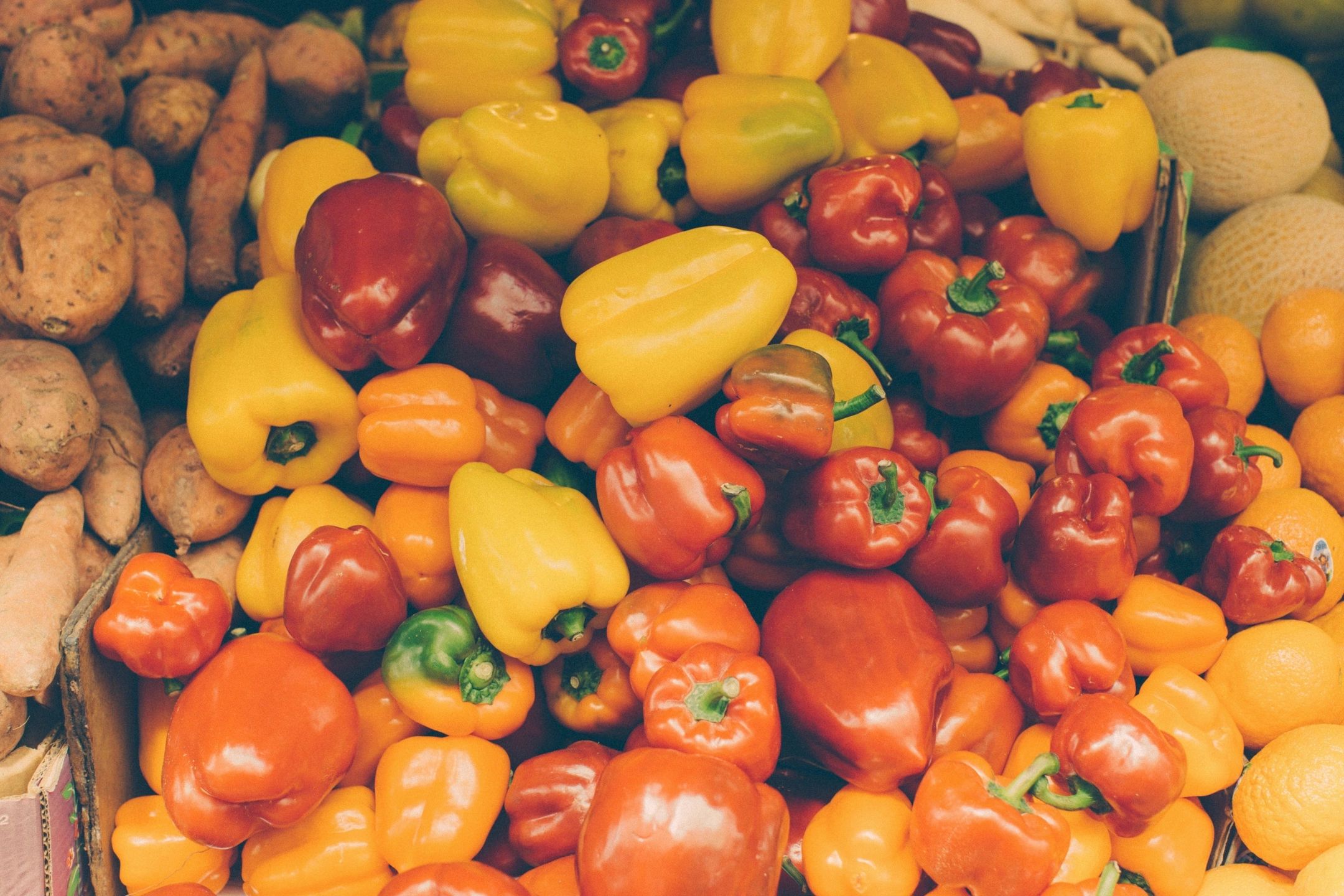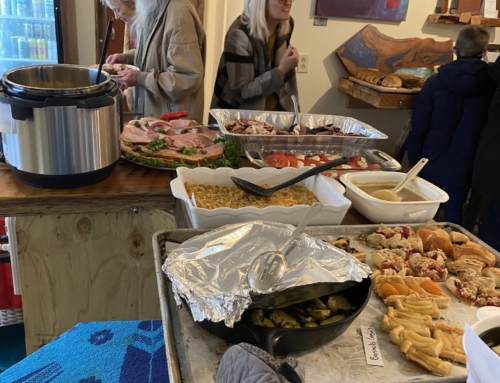Another favorite of the nightshade family is the pepper: there are hundreds of kinds, ranging from super sweet to hellishly hot. I’ll focus on the sweet. Many do not like green bell peppers and for good reason: they are green, are not ripe and can be bitter. One can find in the grocery stores ripe bell peppers that are red, yellow and orange but chances are these took an international trip before getting to the store. Like tomatoes, peppers of all kinds are planted in the late spring once the soil and ambient temperature are warm. It takes about 2 months for a pepper to become green and ‘ripe’ enough to eat. To get to the full ripe state of red, orange or yellow takes another month. The fruit are heavy and require some effort to support so farmers are often ready to pick green and sell. So what does one do if one wants a pepper with color and sweetness? Plant Lunchbox Peppers! Not only are the colored peppers sweet and hand size for snacking, but they are loaded with polyphenols and fiber. Local growers are having success with these so buy a pint container and enjoy. One can chop up for a cold potato salad … remember from last newsletter the gut healthy resistant starch in cold potatoes? … sauté or just eat out of hand. Chop off the top and crunch away.
Now to make these peppers a little more fulfilling one can stuff with a favorite creamy or pimento cheese, egg salad or this vegan tuna salad. Yes, I saw this concoction from my favorite food writer for the Food Section in the New York Times and was skeptical. But I made it and it is a rather impressive tuna substitute and stuffs in a little pepper beautifully!! Plus so healthy and easy for a picnic lunch.
https://www.nytimes.com/2020/08/19/dining/chickpea-salad-recipe.html
For some nostalgia I did what my mother would do in the summer with fresh tomatoes: scoop out the core and seeds of the tomato and stuff with tuna salad. Now I can replicate this fond food memory and eat vegan!
Eggplant: another nightshade that many people do not like and again, for good reason. Those in the grocery stores are old therefore really bitter, dry and tasteless. A freshly picked eggplant is divine! Like tomatoes and peppers, the eggplant seedlings are planted once the soil and temperatures are warm. The common purple globe or Italian eggplant are heavy so can be a challenge for the grower. The more delicate and elongated Asian eggplant are easier for the grower to manage plus these beauties taste great!
For those who do like eggplant parmigiana but not the labor involved, here is an easy and very tasty approach to making a delicious Asian eggplant Italian dish. I plan on one 8”, plus or minus, eggplant for each person BUT it never hurts to have leftovers!
- Wash, pat dry and remove the ends of the eggplant. Slice lengthwise and score [make slashes] on the cut side.
- Heat a nice splash of EVOO in your cast iron skillet or non-stick one, ensuring all your eggplant can fit. Of course you can do a few rounds of the next step. The eggplant loves EVOO and will absorb it nicely.
- Once the oil is hot, carefully place the eggplants, cut side down, in the skillet, maybe even using a tong so as not to get hot oil splashed on you.
- Fry the eggplant until golden, 3-4 minutes. Adjust heat to ensure it does not burn. Then carefully turn the pieces and fry a few more minutes. OK ….. hard part done!
- Tuck these golden eggplant in a Pyrex or similar baking dish, the cozier the better. Generously sprinkle a salty cheese of your choice: I use a local feta but a vegan cheese will work as well. Because the cheese is salty, no need to salt the eggplant unless needed.
- Here one can cover the eggplant with fresh tomatoes but I personally like to use my homemade marinara sauce that is really rich with garlic and herbs. Sprinkle a little dried oregano on top and cover with parchment paper or foil.
- Bake at 350 for 30 minutes and check for tenderness. A really fresh eggplant can even be done in 20. Remove the cover and let the deliciousness bake another 5-10 minutes.
I like to contrast creamy with the acid of the tomatoes so I serve the creamy cucumber salad idea in last newsletter. Of course if you like bread, gluten free or not, serve that on the side. And sop up the juices!
All the vegetables we have discussed in these articles [tomatoes, cucumbers, squash, zucchini, eggplant and peppers] grow in a temperate climate so once the weather gets cold and we get a frost , these veggies are done. For us here in Western North Carolina, their season is up in October.
So here is a little test: should you be eating ‘fresh’ tomatoes in January?
Next vegetables: beans and many other colorful ones in the family.






